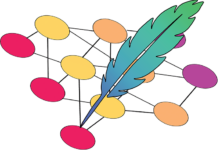Introduction
In an era where technology evolves at lightning speed, understanding the trajectory of artificial intelligence (AI) in robotics is not just insightful—it’s essential for any business leader. AI-driven robotics is reshaping industries.
The Evolution of AI and Robotics
Our journey begins with the early days of robotics in the 1950s and 1960s. Back then, robots were hard-coded machines designed for single tasks, like the Unimate robot arm that revolutionized manufacturing by automating repetitive and hazardous tasks. However, these robots lacked adaptability and intelligence—they couldn’t handle unexpected situations or learn new tasks without extensive reprogramming.
Fast forward to the present, and we see a dramatic transformation. Advances in AI, particularly machine learning and deep learning, have endowed robots with the ability to perceive their environment, make decisions, and even learn from experience. Robots can now navigate complex spaces, recognize objects and faces, understand human speech, and interact naturally with people.
Why Robots Need AI
Without AI, robots are limited to predefined actions in controlled environments. They struggle with unpredictability—the kind we encounter daily in human-designed spaces. AI equips robots with sensory processing akin to human sight and hearing, enabling them to adapt to new situations. For example, an AI-powered kitchen assistant can adjust recipes for dietary restrictions, learn new cooking styles, and even keep the kitchen organized, making it a valuable asset in both commercial and home settings.
The Strategic Importance of Humanoid Robots
Humanoid robots, designed to resemble the human body, offer unique advantages. Our world is built around human dimensions and capabilities, from the height of door handles to the layout of workspaces. Humanoid robots can seamlessly integrate into these environments without significant modifications. They can use the same tools, navigate the same spaces, and interact with the same interfaces we do, making them highly versatile and cost-effective for businesses.
Current Applications and Industry Impact
Robots are making significant inroads across various industries:
- Manufacturing: Smart factories leverage robots for assembly, quality control, and predictive maintenance, boosting efficiency and reducing costs.
- Healthcare: Surgical robots enhance precision in operations, while assistive robots aid in patient care and rehabilitation.
- Logistics: Autonomous drones and warehouse robots streamline supply chains, improving speed and accuracy in deliveries.
- Service Sector: Robots provide customer service, hospitality, and retail assistance, enhancing customer experiences.
Businesses adopting AI-driven robotics gain efficiency, reduce operational costs, and achieve a competitive edge through innovation and data-driven decision-making.
Safety and Ethics: Cornerstones of Robotic Integration
As we integrate robots more deeply into society, safety and ethics become paramount. Implementing robust safety measures—including physical safeguards, cybersecurity protocols, and compliance with regulations—ensures the well-being of both humans and robots. Ethical considerations guide responsible AI development, addressing issues like transparency, bias, accountability, and the social impact of robotics on employment and privacy.
Looking Ahead: Future Trends in AI and Robotics
The future holds exciting possibilities:
- Artificial General Intelligence (AGI): Efforts are underway to develop robots with human-like understanding and the ability to perform any intellectual task.
- Advanced Human-Robot Interaction: Improvements in natural language processing and emotional intelligence will make interactions with robots more natural and effective.
- Swarm Robotics: Coordinated groups of simple robots working together can perform complex tasks, with applications in disaster response and environmental monitoring.
- Biologically Inspired Robotics: Robots mimicking biological organisms offer enhanced mobility and adaptability, opening new frontiers in exploration and service.
Conclusion
The evolution of AI in robotics is more than a technological advancement—it’s a transformative force reshaping industries and redefining what’s possible in business operations. As leaders, embracing these innovations is not just about staying current; it’s about positioning our organizations for sustained success in a rapidly evolving landscape.
Tags: #AI #Robotics #Innovation #Technology #BusinessStrategy #FutureTech


